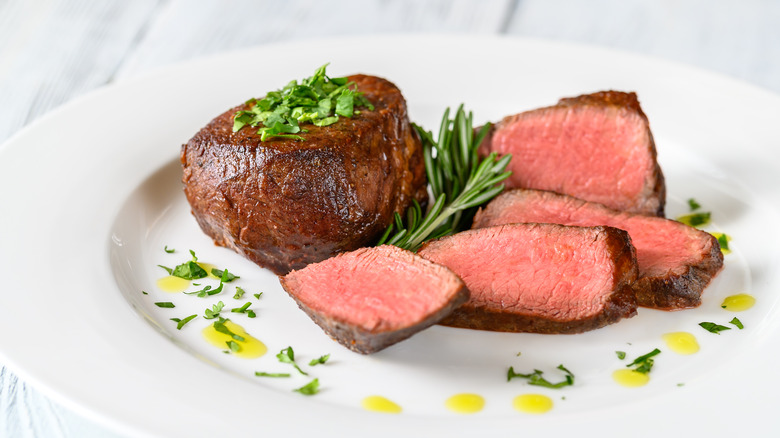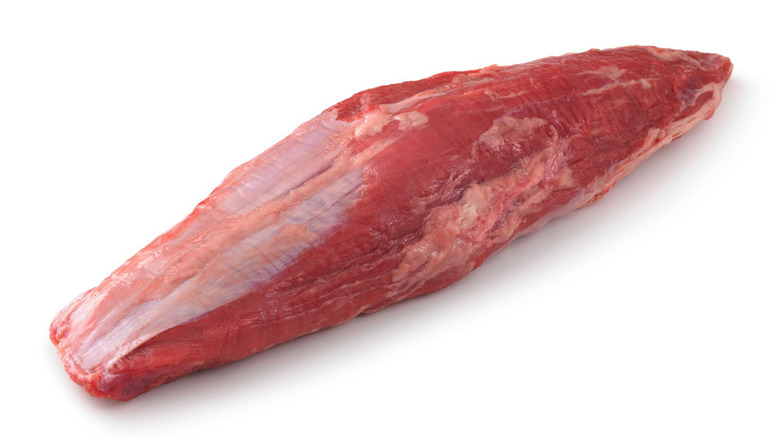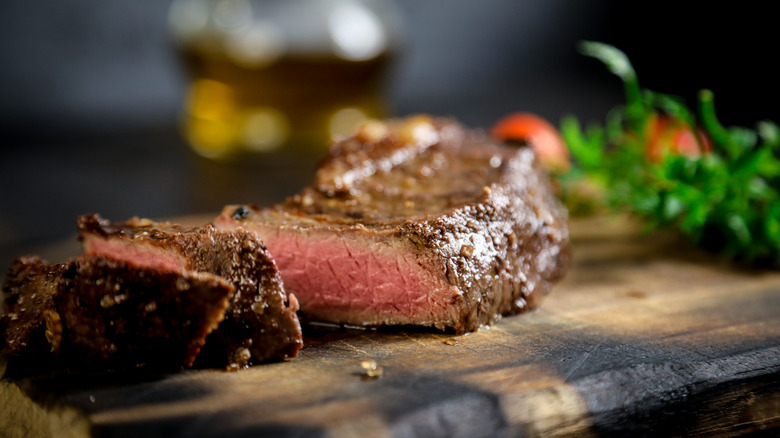The Cheap Steak Cut That Doubles As A Filet Mignon Alternative
At over $30 per pound (and potentially more, depending where you buy it), filet mignon is arguably the most expensive steak cut out there aside from ultra-fancy imports like Kobe or Wagyu beef. It's extraordinarily tender, with a distinctive beefy flavor and relatively low fat. Because there's so little of this cut on one cow, it comes at a high price. However, you can get some of those same attributes in a much more affordable cut — the shoulder petite tender.
This cut goes by a few names, so you may also see it sold as chuck shoulder tender, shoulder tender medallions, or just shoulder tender. As with any other cut, prices will vary between butchers and grocery stores, but it can be as cheap as $14 per pound — basically half the price (or less) of filet mignon. It comes from the shoulder (or chuck) section of the cow. The muscle is called the teres major, and the steak may also be sold under this name. But be warned: It's not the most common cut to find because it's difficult for butchers to remove from the cow. There's not much payoff, as one cow only yields a few of these steaks. Often, butchers will cut a larger chunk of shoulder and not separate out the shoulder petite tender.
Why is the shoulder petite tender so good?
The shoulder petite tender is often compared to filet mignon or tenderloin steak, and a key reason for this is because it's very tender — perhaps the next most tender after those two better-known cuts. The teres major is a muscle that cows rarely use. As a general rule, the more a muscle is worked, the tougher it becomes. Consequently, cuts from the shoulder area are much tougher, but the petite tender is an exception.
On top of that tenderness, this cut also offers a distinctly beefy flavor. It's a lean cut that's relatively low in fat — characteristics that it shares with filet mignon. It's worth noting that these kinds of tender-yet-lean cuts do have their detractors, though. When it comes to beef, there's a commonly held belief that fattier meat tends to have more flavor, so some chefs are not fans of leaner cuts like filet mignon. (Real haters may even argue that this is why filet mignon is sometimes served wrapped in bacon — to add flavor). Nonetheless, the shoulder petite tender is often held up as a quality, tasty cut sold a reasonable price.
Cooking with shoulder petite tender
If you're using shoulder petite tender as a substitute for filet mignon, chances are you want to grill or sear it — and these are generally popular methods for cooking this cut. Bear in mind that if you're a serious carnivore, you won't be able to source a huge hunk; It's a small cut, often around 10 ounces. Since it's so lean, it's wise to season it with salt a little further in advance than you might otherwise do with other cuts. A day (or at least a few hours) before is good. You probably won't want to cook the petite tender to more than medium or medium-rare. When cooked longer, lean cuts like this can dry out, and you won't get any of the tenderness if you grill it until it's well-done.
Otherwise, all the standard rules for grilling steak apply: Pat the meat dry, let it sit at room temperature a while before cooking, and use a super-hot grill. Be sure to let the meat rest when it's done so it's nice and juicy.
Grilling isn't the only option for this cut. It roasts well, but again, you'll still want to keep it to medium-rare. Use a meat thermometer if you're unsure. It can also work well in tacos or kebabs.


